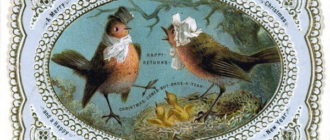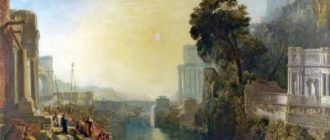
Self-portrait in clothes trimmed with fur by Albrecht Dürer is a daring work at the turn of the 15th-16th centuries
Self-portrait in clothes trimmed with fur is the most famous painting painted by Albrecht Dürer in 1500. In the center of the composition is the author himself, depicted on a neutral dark background and presented in front. He is noble, calm, handsome. Even light snatches out of the twilight the correct features of the face and the right hand. The gaze is full of concentration and directed at the viewer. Long wavy hair falls over her shoulders. And the self-portrait itself is associated with the image of Jesus Christ, which many find immodest and even blasphemous. The impression is strengthened by an inscription in gold paint in Latin on the right and a monogram opposite – a large A and a small D – the master’s signature.
The name of the painting: Self-portrait in clothes trimmed with fur (German: Selbstbildnis im Pelzrock).
Author: Albrecht Dürer (1471-1528).
Year of writing: 1500
Dimensions: 67.1 x 48.9 cm.
Style: Renaissance.
Genre: Portrait.
Technique: Oil painting.
Material: Wood.
Location: Alte Pinakothek, Munich Albrecht
Dürer is a great German painter, graphic artist, engraver and art theorist of the late 15th – early 16th centuries.
His work is characterized by a humanistic orientation, similar to the work of some Dutch and Italian masters, such as Leonardo da Vinci and Michelangelo. Embodying the high ideals of the Renaissance, Dürer created images of people with courageous and passionate characters. Well versed in matters of philosophy and ancient literature, he showed a deep interest in the interaction of art with science. In addition, he was a talented mathematician. The dynamics and rhythm in his works are verified with mathematical precision. And love for complex allegories often left a mark in compositions with symbolic meaning.

The painting “Self-portrait in clothes trimmed with fur” was painted by the author at the age of 28 and in many respects corresponds to the spirit of the master. However, it is fundamentally different from two previous similar works – “Self-Portrait with Thistles” (1493), created especially for the bride, and “Self-Portrait” in 1498, depicting a successful master. In them, Dürer appeared in a “three-quarters” spread – the traditional angle for secular portraits of that time.

In the third picture, the master paints himself strictly in full face, which by the standards of that time was allowed only for images of the Son of God. Dürer for the first time stepped over this canon. However, he, being a believer, had no intention of encroaching on religious dogmas. And thinking about his vocation, in a self-portrait he embodied the idea that an artist, like God, is a creator.
Using the full face, the artist was able to convey tranquility and impassivity, embody ideas about the ideal personality. At the same time, Dürer did not abandon realism. There is a seriousness and purposefulness in the picture.
The details are carefully written. They almost do not affect the overall impression, but convey every feature in detail. His hero, although somewhat idealized, is not a figment of the author’s imagination, but a living person with his own thoughts and actions. The painting “Self-portrait in clothes trimmed with fur” by Albrecht Dürer marked the brilliant flowering of the skill of the German artist and became the first work in European art that glorifies the human creator. And it is still a work that leaves an ambiguous impression, causing heated debates about secret meanings.






